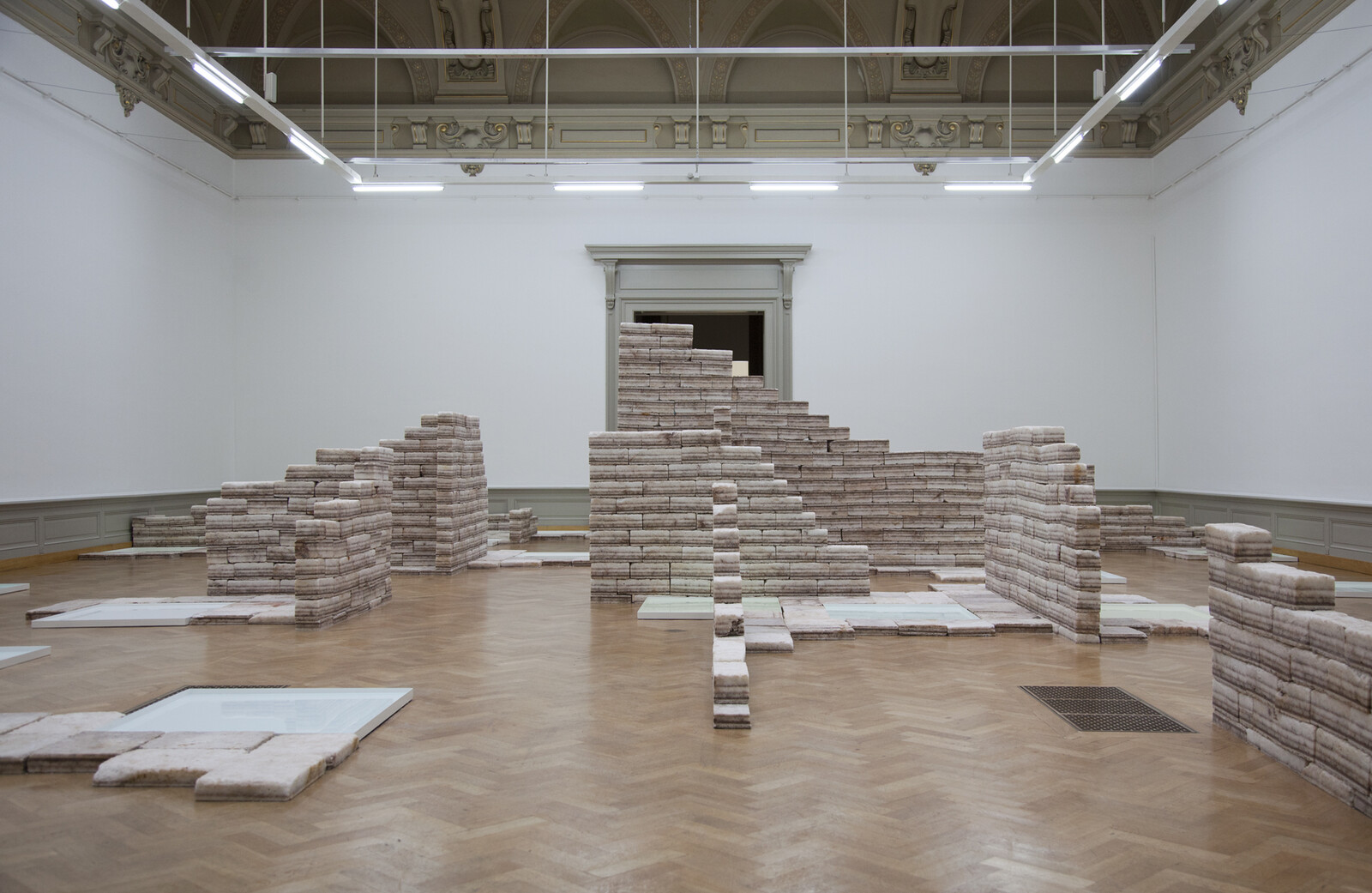-

Exhibition: Controlled Burn, Langen Foundation
-

Controlled Burn
-

Panchronic Garden
-

Exhibition: Erratic, SFMOMA
-

Exhibition: Soothsayers, Dittrich & Schlechtriem
-

Exhibition: Concentrations 63: Julian Charrière, Towards No Earthly Pole, Dallas Museum of Art
-

Thickens, pools, flows, rushes, slows
-

We Are All Astronauts
-

Exhibition: Weight of Shadows – Prix Marcel Duchamp 2021, Centre Pompidou
-

Exhibition: Towards No Earthly Pole, Aargauer Kunsthaus
-

Exhibition: Viva Arte Viva - 57th Venice Biennale 2017
-

Iroojrilik
-

Metamorphism
-

Exhibition: An Invitation to Disappear, Kunsthalle Mainz
-

An Invitation to Disappear
-

Exhibition: As We Used to Float, Berlinische Galerie
-

Ever Since We Crawled Out
-

Exhibition: First Light, Galerie Tschudi
-

Tropisme
-

First Light
-

Exhibition: Pitch Drop, Sies + Höke
-

Terminal Beach
-

A Sky Taste of Rock
-

Clockwork
-

Objects in Mirror Might Be Closer Than They Appear
-

Somehow, They Never Stop Doing What They Always Did
-

The Blue Fossil Entropic Stories
-

Exhibition: For They That Sow the Wind, Parasol Unit
-

The Key to the Present Lay in the Future
-

On The Sidewalk
-

Some Pigeons Are More Equal Than Others
-

Panorama
-

Polygon
-

The Purchase of the South Pole
-

Future Fossil Spaces
-

I Am Afraid, I Must Ask You to Leave
-

Somewhere
-

Exhibition: Towards No Earthly Pole, MASI Lugano
-

Exhibition: Future Fossil Spaces, Musée Cantonal des Beaux-Arts de Lausanne
-

Where Waters Meet
-

Towards No Earthly Pole
-

And Beneath It All Flows Liquid Fire
-

Exhibition: All We Ever Wanted Was Everything and Everywhere, MAMBo Bologna
-

In the Real World It Doesn't Happen That Perfectly
-

Not All Who Wander Are Lost
-

Exhibition: Controlled Burn, Langen Foundation
-

Controlled Burn
-

Panchronic Garden
-

Exhibition: Erratic, SFMOMA
-

Exhibition: Soothsayers, Dittrich & Schlechtriem
-

Exhibition: Concentrations 63: Julian Charrière, Towards No Earthly Pole, Dallas Museum of Art
-

Thickens, pools, flows, rushes, slows
-

We Are All Astronauts
-

Exhibition: Weight of Shadows – Prix Marcel Duchamp 2021, Centre Pompidou
-

Exhibition: Towards No Earthly Pole, Aargauer Kunsthaus
-

Exhibition: Viva Arte Viva - 57th Venice Biennale 2017
-

Iroojrilik
-

Metamorphism
-

Exhibition: An Invitation to Disappear, Kunsthalle Mainz
-

An Invitation to Disappear
-

Exhibition: As We Used to Float, Berlinische Galerie
-

Ever Since We Crawled Out
-

Exhibition: First Light, Galerie Tschudi
-

Tropisme
-

First Light
-

Exhibition: Pitch Drop, Sies + Höke
-

Terminal Beach
-

A Sky Taste of Rock
-

Clockwork
-

Objects in Mirror Might Be Closer Than They Appear
-

Somehow, They Never Stop Doing What They Always Did
-

The Blue Fossil Entropic Stories
-

Exhibition: For They That Sow the Wind, Parasol Unit
-

The Key to the Present Lay in the Future
-

On The Sidewalk
-

Some Pigeons Are More Equal Than Others
-

Panorama
-

Polygon
-

The Purchase of the South Pole
-

Future Fossil Spaces
-

I Am Afraid, I Must Ask You to Leave
-

Somewhere
-

Exhibition: Towards No Earthly Pole, MASI Lugano
-

Exhibition: Future Fossil Spaces, Musée Cantonal des Beaux-Arts de Lausanne
-

Where Waters Meet
-

Towards No Earthly Pole
-

And Beneath It All Flows Liquid Fire
-

Exhibition: All We Ever Wanted Was Everything and Everywhere, MAMBo Bologna
-

In the Real World It Doesn't Happen That Perfectly
-

Not All Who Wander Are Lost





















































